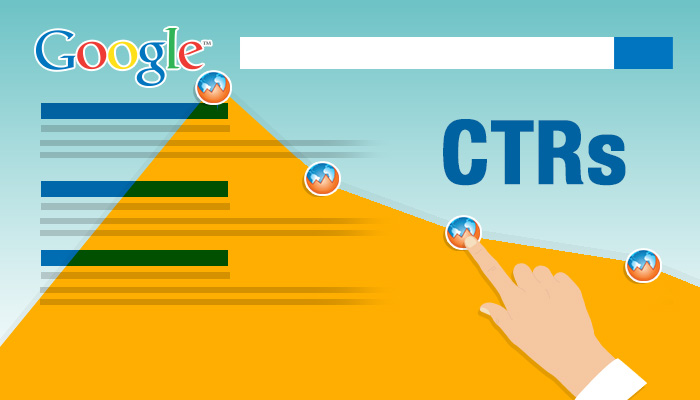New Study Examines Organic Click-Through Rates on Google’s SERPs
A recent study by Advanced Web Ranking took a new look at Google’s organic search results and what has been driving their click-through rates (CTRs). While Google’s so called Ten Blue Links will continue to set the bar for good searches, the study believes that there is still no direct means of predicting how organic CTRs in Google’s “continuously improving search results” will evolve.
“Nowadays Google is mixing the SERPs with dozens of distracting elements like images, video, news, carousels, entities and so on. That is one of the reasons why, in 2014, it is close to impossible to predict what will catch the reader’s eye on a search results page,” the study notes.
As anticipated, more emphasis is given to the first 10 links for any search result on desktop. Figure 1— which contains data collected from Google Webmaster Tools in July 2014—indicates that at least 71.33% of searches result in an organic click on the first page for desktop searches.
In contrast, the second and third pages receive only 5.59% of organic clicks for desktop searches. Additionally, the first five results on the first page made up for an estimated 67.6% of organic clicks, whereas the sixth to tenth results on the first page account for only 3.73% of clicks.
The study pinpoints four factors that influence Google’s organic CTR: Google’s shifting search UI, ads, intent, and devices. Starting with the changes in search results, the study observes that Google now serves “richer, more relevant answers” which can be summed up through some of their new features:
- Knowledge graph “instant results” for people, places and things.
- Product listings / shopping for buying signals.
- Dictionary results for “definition-based” queries.
Ads have been a part of Google since 1998, and have since evolved from simple text pieces on a yellow background into more sophisticated displays. Aside from their presentation, the study notes that ad positioning and the number of ads present on the page also affect organic CTR. When it comes to user intent, the study also categorized the different queries made by users since “the heart of every Google search is a need:” Navigational, Informational, and Transactional.
With mobile being a fast-growing segment in the industry, it has now become a significant factor when it comes to measuring organic CTR. However, as seen in Figure 2 above, mobile CTR is markedly different from desktop CTR, as CTR for mobile searches rises on the second and third pages.
Ian Lurie of Portent stated in the study that this could imply that first positions on mobile “are less significant than we thought.” However, Alan Ng of Branded 3 also pointed out that these results could be limited to U.S. searches, which Google has more accurate data of, and could be different if rolled out internationally.
Advanced Web Ranking analyzed over 465,000 keywords across 5,000 websites. The data was collected from Google Webmaster Tools for the month of July 2014. The extensive study can be viewed here.
What do you think of this new study on Google’s organic CTR? How will these findings affect your SEO, PPC, and digital marketing campaigns? Sound off in the Comments section below.
Marketing Digest Writing Team
Latest posts by Marketing Digest Writing Team (see all)
- How Taco Bell Struck Gold with Its Memorable Viral Marketing Campaigns - September 15, 2015
- Salesforce Marketing Cloud Releases New Instagram Marketing Tools - September 12, 2015
- Chrome Begins Pausing Flash Ads by Default to Improve User Experience - September 3, 2015



